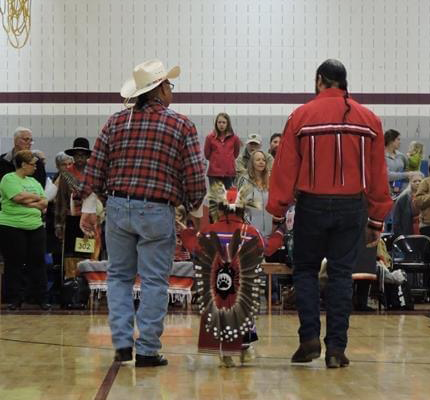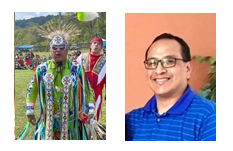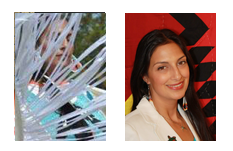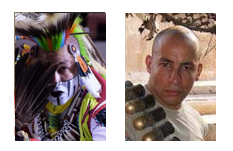
As an Indigenous person and a journalist, I am always concerned with articles or news stories, either in mainstream newspapers or electronic media, that directly involve Indigenous people. What is true about Indigenous people and what is simply not? What do you really know about the Native people that many of us write about? For example, how many federally recognized tribes/Nations are there in the United States in 2021, and how many Indians are left in the United States today? What is the proper term for Native people? Do Native/Indigenous people celebrate U.S. holidays such as Thanksgiving and Independence Day?
According to the AP stylebook, “American Indians, Native Americans both are acceptable terms in general references for those in the U.S. when referring to two or more people of different tribal affiliations. For individuals, use the name of the tribe; if that information is not immediately available, try to obtain it. He is a Navajo commissioner.” Most Native people prefer not to be called American Indians or Native Americans and instead prefer the term Indigenous. The Merriam-Webster dictionary defines Indigenous as “of or relating to the earliest known inhabitants of a place and especially of a place that was colonized by a now-dominant group.” I believe that this best describes all Native people left on this continent.
I agree with the AP guidance on using the tribal affiliation as much as possible. The AP example, “He is a Navajo commissioner,” is the most correct and respectful way to show tribal affiliation. Julia Rose White Bull (Lakota, Standing Rock Sioux Tribe) says, “I prefer to be called Lakota. I prefer Indigenous or American Indian as well. In 1492, ‘Dios’ was what Columbus and his people called us, which means the people of God.” Patrick Littlewolf Brooks (The Tuscarora Tribe of the Iroquois 6 Nations) says that he prefers to be called Tuscarora or to be called Indigenous because “it’s not just a word to call us in a news story… it is who I am.”
I would add that most Indigenous communities prefer the use of the word “Nation” over “tribe” when describing or writing about their communities. The reason is that when the word tribe is used, the first mental image that comes to mind is of a people that carry bows and arrows or spears while wearing buckskins, or a breech cloth, maybe riding a horse and living in a remote, undeveloped part of the country. The word Nation evokes the mental image of a people that have a territory, an organized community with a set of laws, and their own government to write and enforce those laws. This best describes Indigenous communities throughout the United States, from coast to coast and border to border. It is a matter of fact that Benjamin Franklin and other designers of the Constitution of the United States thought that the Iroquois Nation’s notion of democracy was so well developed that they used it to help form the idea of how the government should be framed for the United States (https://www.history.com/news/iroquois-confederacy-influence-us-constitution). Additionally, only sovereign Nations have the ability to make treaties with the United States. There are more than 370 ratified treaties between the Indigenous Nations and the United States of America. Only a few of those treaties, those promises, were ever kept or honored by the United States of America (https://www.npr.org/sections/codeswitch/2015/01/18/368559990/broken-promises-on-display-at-native-american-treaties-exhibit).
At the time of first contact between Europeans and Native cultures, it is estimated that 112 million Indigenous people lived in the Americas (https://uwpress.wisc.edu/books/0289.htm). According to the 2020 U.S. Census, there are only 6.9 million Indigenous people left living in the United States. According to the National Congress of American Indians, in 2021 there are 574 federally recognized Indigenous Nations left in the United States. Hundreds of languages indigenous to the United States were alive and thriving just a few hundred years ago. In 2019, According to Ethnologue, “of the 115 Indigenous languages spoken in the U.S. today, two are healthy, 34 are in danger, and 79 will go extinct within a generation without serious intervention.”
Where do most of the Indigenous people within the borders of the United States live? Most non-Natives will answer the Dakotas, Arizona, or Oklahoma. The largest number of Indigenous people in the United States live in California. Today about 22 percent of all Indigenous people in the United States live on Indian Reservations. The remaining 78 percent live in the cities and towns of America. However, most Indigenous people work to hold on to their Native beliefs and traditions and never completely become mainstreamed into the dominate culture.
What other issues are facing Indigenous people and Native Nations in 2021? One of the most important concerns is the installation of oil pipelines across Indian Reservations in the United States. It is a well-known fact that the United States as a country is addicted to oil for daily life, and that oil is becoming more and more in short supply. Another fact is that the United States and Indigenous people need clean water just to survive. Native Nations work hard to stop oil pipelines from being built in their water ways. The question is not if the pipeline will spill, but when it will spill and pollute the water on Native lands. Water is needed for the survival of both Indigenous and non-Native populations. Oil, on the other hand, is just a way of life, and much of it can be replaced with alternate energy such as solar energy or wind power.
Missing and murdered Indigenous women are another important issue for Indigenous communities. According to Native Women’s Wilderness, Indigenous women and girls are murdered at a rate that is 10 times higher than among all other ethnicities (nativewomenswilderness.org/mmiw). Indigenous women are violent crime victims at double the rate of the general U.S. population; the U.S. Department of Justice notes that seven out of ten victims report those who hurt them as being from another race (justice.gc.ca/eng/rp-pr/jr/jf-pf/2019/may01.html).
There are many more issues facing Indigenous communities in 2021, in fact, too many to list.
So, do the Indigenous people residing in the United States celebrate Thanksgiving, Independence Day, or other American holidays? In 1990, President George H.W. Bush approved a resolution designating November as National American Indian Heritage Month (archives.gov/news/topics/native-american-heritage-month). And, in 2008, President George W. Bush signed a law designating the Friday after Thanksgiving as Native American Day. Still, most Indigenous people and many non-Native people do not recognize this day as one of respect or honor of Indigenous people. According to wikigb, “In addition to calling Thanksgiving the ‘National Day of Mourning,’ some Native Americans believe it is ‘poor taste’ for Native American Heritage Day to be on Black Friday – ‘a day of excess and gluttony and greed and aggressive capitalism’ – which itself ‘falls after a holiday that omits the murder and mutilation of Natives [in which they] mourn the [estimated] millions of indigenous people who died as a result of aggressive settler colonialism”
 When asked if she celebrates Thanksgiving, Julia Rose White Bull (Lakota, an enrolled member of the Standing Rock Sioux Tribe) says, “Every year when Thanksgiving comes around, I think of it as a day of mourning. In my family, we traditionally use it as a day of fasting. I think about the thousands of Indian children who have been found in Canada at Indian Boarding Schools and at the residential schools (in 2021, more than 6,500 skeletal remains of Native children who attended Indian Boarding Schools have been found in unmarked graves in Canada and in the United States). I think of the genocide we survived and the massacres. I also think of cultural appropriation in the media and social media, where people wear red face (non-Indians wearing what they think are Native warrior painted faces usually at sporting events) or women wear Native headdresses (Native feathered headdresses are earned over a lifetime and are one of the highest honors for Native leaders and considered very sacred). We are born with the potential to be leaders, educators, mothers, artists, and creators. Today is the time to act in the teachings of our elders and holy people and to cultivate the resilience we have always known. Even after everyone eats Thanksgiving dinner comfortably in their homes… the fight will still be there afterwards.”
When asked if she celebrates Thanksgiving, Julia Rose White Bull (Lakota, an enrolled member of the Standing Rock Sioux Tribe) says, “Every year when Thanksgiving comes around, I think of it as a day of mourning. In my family, we traditionally use it as a day of fasting. I think about the thousands of Indian children who have been found in Canada at Indian Boarding Schools and at the residential schools (in 2021, more than 6,500 skeletal remains of Native children who attended Indian Boarding Schools have been found in unmarked graves in Canada and in the United States). I think of the genocide we survived and the massacres. I also think of cultural appropriation in the media and social media, where people wear red face (non-Indians wearing what they think are Native warrior painted faces usually at sporting events) or women wear Native headdresses (Native feathered headdresses are earned over a lifetime and are one of the highest honors for Native leaders and considered very sacred). We are born with the potential to be leaders, educators, mothers, artists, and creators. Today is the time to act in the teachings of our elders and holy people and to cultivate the resilience we have always known. Even after everyone eats Thanksgiving dinner comfortably in their homes… the fight will still be there afterwards.”
 This sentiment is common with Indigenous people throughout the country. Lawrence D. Reddest, a 4/4 Brūlé Lakota (an enrolled member of Sīcangu Rosebud Sioux tribe of South Dakota) who grew up on the Pine Ridge and Rosebud Indian Reservations, says that “Today our family does not celebrate Thanksgiving; however, we use it as a time to get families together, sometimes giving thanks for all the blessings we have been given.”
This sentiment is common with Indigenous people throughout the country. Lawrence D. Reddest, a 4/4 Brūlé Lakota (an enrolled member of Sīcangu Rosebud Sioux tribe of South Dakota) who grew up on the Pine Ridge and Rosebud Indian Reservations, says that “Today our family does not celebrate Thanksgiving; however, we use it as a time to get families together, sometimes giving thanks for all the blessings we have been given.”
Ariana Chiago (Akimel O'odham Salt River Maricopa Nation) says that she knows some Indigenous people who do celebrate Thanksgiving the way mainstream America does, but that most of her people simply use the day as an excuse to come together and eat with family.
 Rebecca Balog (Lakota/Mohawk/Romani) adds that “America holds a fantasy of Harvest Home table feasts called Thanksgiving. Every November, the popular imagination reflects on strong relationships set in a common cheer overcoming harsh winters, strained relations, and plights…What is gravely forgotten was the abandonment of these illusions of shared futures and festivities of feasts for a shared future on shared land. The true history is violence, enslavement, trafficking, genocide, and the 'manifest destiny' destined to leave a trail of broken promises and broken treaties. This is often called Intergenerational Trauma – memory that lives in our current world, around our modern table feasts, lunches, and dinners, except, not only in November, but every day. This residual reality of violence still exists today when the homes and the bodies of our people are invaded in current times across Indian Country.”
Rebecca Balog (Lakota/Mohawk/Romani) adds that “America holds a fantasy of Harvest Home table feasts called Thanksgiving. Every November, the popular imagination reflects on strong relationships set in a common cheer overcoming harsh winters, strained relations, and plights…What is gravely forgotten was the abandonment of these illusions of shared futures and festivities of feasts for a shared future on shared land. The true history is violence, enslavement, trafficking, genocide, and the 'manifest destiny' destined to leave a trail of broken promises and broken treaties. This is often called Intergenerational Trauma – memory that lives in our current world, around our modern table feasts, lunches, and dinners, except, not only in November, but every day. This residual reality of violence still exists today when the homes and the bodies of our people are invaded in current times across Indian Country.”
 Patrick Littlewolf Brooks (The Tuscarora Tribe of the Iroquois 6 Nations) adds that he does not celebrate Thanksgiving. He says that his people were among “...the first to meet the Europeans when they arrived on these shores and hundreds of tribes along the Eastern Coast were killed and completely wiped out by these new settlers.” For him and many of his people, it’s a day of mourning.
Patrick Littlewolf Brooks (The Tuscarora Tribe of the Iroquois 6 Nations) adds that he does not celebrate Thanksgiving. He says that his people were among “...the first to meet the Europeans when they arrived on these shores and hundreds of tribes along the Eastern Coast were killed and completely wiped out by these new settlers.” For him and many of his people, it’s a day of mourning.
As an Indigenous person in 2021, I must also agree that Thanksgiving is not how it is taught in schools or seen in news media or social media in the United States and Canada. In fact, for most Indigenous people in the United States and Canada, it is just the opposite.
Another American holiday that Natives and non-Natives question is Independence Day. Do Indigenous people celebrate Independence Day? Many tribal Nations were destroyed, and many Indigenous men, women, and children were killed by the United States Army. That may, at first glance, seem like the main reason Indigenous people would not celebrate Independence Day. However, it is not. The reason most given is that Indigenous people within the borders of the United State are still colonized; we don’t have Independence in 2021. Still, we have stood up and fought in every one of this country’s conflicts, from the Revolutionary War to the Afghanistan war. It is important to remember that the Indigenous languages that Indigenous people were forbidden to speak and were punished for speaking in American boarding and public schools are the very languages that Native Code Talkers spoke to save us in World War II.
Every year, ahead of July 4, I am asked if I, as a Native person, will celebrate Independence Day. I once wrote this on social media: “It seems like everyone that I ran into today asked me if I would be celebrating the 4th – being NDN and all... I think it’s finally getting to me! I have been explaining all day that we are the human beings, and we love this land. It’s alive and we belong to it. Per capita, more American NDNs volunteer for military service in the United States than any other people and have since the Revolutionary War. I will visit with my kids and grandkids, share some food with them, and remember all my people who have spilled their blood to give me this opportunity.” A 2018 Indian Country Today article noted that “[a]ccording to the Department of Defense, in 2010... Native people have the highest per-capita involvement of any population to serve in the U.S. Military.”
Patrick Littlewolf Brooks (The Tuscarora Tribe of the Iroquois 6 Nations), a decorated combat Army Veteran of the Iraqi and Afghanistan wars, says that he does not celebrate Independence Day. The “United States won Independence from the British,” he says, “… but American Indians today are still denied theirs.”
Indigenous people in the United States are still here after 529 years of contact with Europeans. We proudly volunteer and fight for the United States of America in every conflict that faces the United States. We work to keep our Native languages and deepest traditions alive to share from generation to generation and at the same time work to become accepted into the mainstream of the dominate American culture. We work to keep our families educated and safe and to respect and honor the elders, Native or not.
Sometimes when someone asks me why I don’t celebrate American holidays such as Thanksgiving, I respond by looking at them directly in their eyes. Then I kindly ask them back, “Why don’t you celebrate Native holidays?”
ABOUT THE AUTHOR

JOHN SANCHEZ (Nde [Apache]/Yaqui) is an Associate Professor of Journalism at the Pennsylvania State University and a Distinguished Faculty member of the Penn State University’s Schreyer Honors College. His research endeavors are at the intersection of Indigenous cultures and the American news media. Sanchez teaches News Media Ethics.

